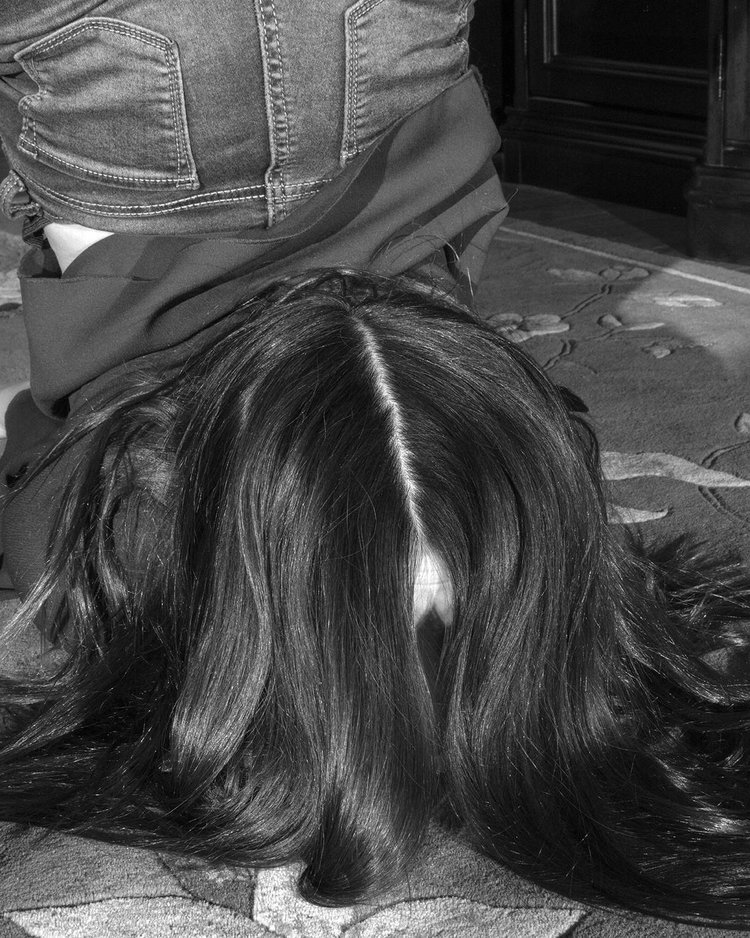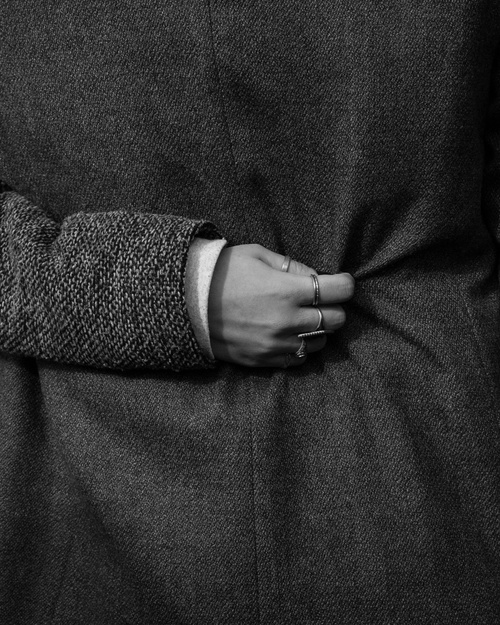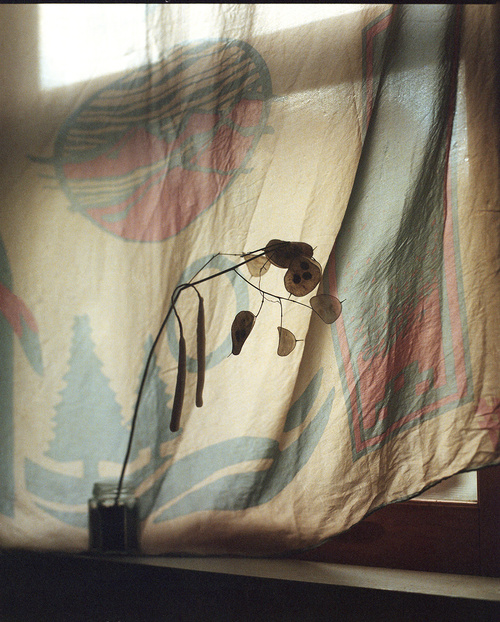Aviary’s current exhibition suits the gallery’s namesake. I was the only patron on the day I visited, but I had the distinct feeling that I was entering an animate space—New Poetics lives and breathes; its subjects peer inquisitively. The exhibition, curated by June T Sanders and Alec Logan Smith, features the work of twenty photographers who grapple with the medium’s “potential for emotional weight, and how we can, may, or will move through the natural & cultural landscapes surrounding us.” Movement is an undeniable component of the exhibition. I have been told by several observant friends that I tilt my head to the left when I listen to someone talk. I rarely notice when I do this, but facing the first, short wall of New Poetics, it felt like a fishhook had caught, and I was reeled with quiet intent across the series of photographs. From the first photograph, Ashley Goodwin’s Mountains Washed Away, the subjects lean, look, reach westward. The photographs captivate the viewer, demanding continued engagement even in their radically different styles and subjects. My first thought, (which I disclose at the risk of being too literal,) was that this set of eight worked as a stanza. While each photograph has a distinctive impact, they seem to have a transitional quality as well—they compel the viewer not just to rest on the current subject, but to tilt into the next.
Ian Sherlock Malloy’s photograph Pisgah exhibits this marriage of stasis and movement. Malloy’s subject, arid mountain scrub portrayed in stark black and white, appears fixed. The plants on the periphery are frail, their crackling almost audible. Yet, there is a sense of movement, of intention. Perhaps bowled over by harsh desert winds on this open mountain face, perhaps reaching upwards towards the peak, the foregrounded brush bends to the left with indiscernible agency. Has it adapted to its environment, as the firmly-planted roots suggest, or is it a mere subject to its surroundings?
While the will of a desert plant may seem relatively aimless, Malloy has selected a particular location that invites further contemplation. Pisgah (Hebr. “cliff, ridge”) is a term used to designate the top of Mt. Nebo, a ridge in modern-day Jordan from which Moses is said to have received the first glimpse of the Promised Land he would never inhabit. From this biblical anecdote comes the second meaning of the term: a faint glimpse of something that is just out of reach. The view that unfolds beneath the mountain today stretches across the West Bank to the city of Jerusalem. Whether this was the intent of the artist or not, the piece can be seen as gesturing towards the ongoing conflict between Israel and Palestine. Malloy’s black and white medium and choice of subject, the struggling but hearty landscape of a holy site, invites its own degree of analysis and appreciation, even as it angles the viewer towards the next piece.
On the opposite wall, the pieces continue to converse. J Houston’s piece Geep’s New Wig and Raegan Bird’s Silver Dollar Sunset complement one another in delicate slant rhyme. In the muted blue of oncoming evening, Houston’s subject crouches in a thin layer of snow. The photograph is bisected by tension and tenderness. Geep’s low crouch in the snow-blanketed plants seems at odds with the softness of the light in the top half of the picture. Wearing a contemplative expression, Geep gently reaches up towards the wig, head tilted slightly forward as the rest of the body is curled tightly underneath itself. Dappled light casts fingerlike shadows that seem to reach for Geep’s hand. Whether snow has newly fallen or is beginning to melt, the photograph suggests that a kind of growth has begun. The delicate, papery casings of the Lunaria biennis “silver dollar” plant seem to echo this theme, an imperfect perfect mirror. Bird has captured the plant at a stage in which it is preparing to reproduce. As self-seeders, silver dollar plants require little outside care—they are incredibly resourceful and independent in their growth from soil to seed.
Though understated, the impact that New Poetics makes is a profound one. At first, I worried my parallels to written poetry were too automatic, clumsy. The poetics of this exhibition are, after all, New. Yet these are the connections that, for me, allowed a newfound conception of my body in the space, which currents it followed and where it paused. In their stunning intimacy, the components of New Poetics are not moments frozen or captured. Instead, they radiate a kind of animate stillness that slows the self, one that allowed the rush of my pulse to beat in my ears and remind me of the quiet ways we show ourselves we are alive. The moments in New Poetics produce a heightened awareness of how we hold ourselves in space, of how we let ourselves be held.






